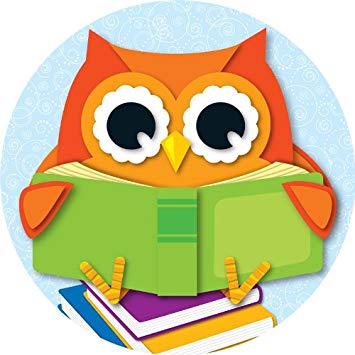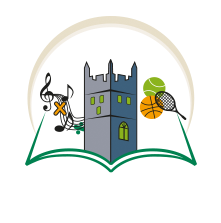Home Learning Support
We recognise that many parents want to support their child's learning at home but are sometimes unsure of how best to do this. Below we have added some useful information to help parents to build on what the children have been learning at school.
If you have any questions or would like more information, please ask your child's teacher.
For further information on our curriculum and what your child will be learning, please visit their year group pages or Our Curriculum page.
Reading and Comprehension
Book Bands
At CVIS, we use a wide and varied reading scheme to support the childrens' reading. Reading helps to develop comprehension and writing skills as well as enjoyment. A variety of extended readers are available for our more able readers.
Books are colour banded to monitor and ensure progression.
Each child has a book mark attached to their diary, these provide helpful questions for you child to consider and will improve their comprehension
An increasing number of children are reading additional books, which is fantastic, BUT we ask that you still read school books alongside these as it supports fluency, comprehension and phonics. There are often questions at the end of the book to discuss with your child.
Phonics: Reading and Spelling
Reading
At Churchdown Village Infant School, phonics is taught through the 'ELS' programme. The children are taught actions and rhymes to help remember the sounds.
All children are taught the skills of identifying individual sounds (graphemes) before blending the sounds to make a word.
All children have access to the Essential Letters and Sounds eBook Library at home.

Essential Letters and Sounds eBook Library
Spelling
All children are taught the skills of segmenting the sounds (phonemes) in a word and choosing the correct letters or group of letters (graphemes) needed to spell it.
Glossary
Phoneme - The smallest unit of sound. There are approximately 44 phonemes in English (it depends on different accents). Phonemes can be put together to make words.
Grapheme - A way of writing down a phoneme. Graphemes can be made up from 1 letter e.g. p, 2 letters e.g. sh, 3 letters e.g. tch or 4 letters e.g ough.
GPC - This is short for Grapheme Phoneme Correspondence. Knowing a GPC means being able to match a phoneme to a grapheme and vice versa.
Digraph - A grapheme containing two letters that makes just one sound (phoneme).
Trigraph - A grapheme containing three letters that makes just one sound (phoneme).
Oral Blending - This involves hearing phonemes and being able to merge them together to make a word. Children need to develop this skill before they will be able to blend written words.
Blending- This involves looking at a written word, looking at each grapheme and using knowledge of GPCs to work out which phoneme each grapheme represents and then merging these phonemes together to make a word. This is the basis of reading.
Oral Segmenting - This is the act hearing a whole word and then splitting it up into the phonemes that make it. Children need to develop this skill before they will be able to segment words to spell them.
Segmenting - This involves hearing a word, splitting it up into the phonemes that make it, using knowledge of GPCs to work out which graphemes represent those phonemes and then writing those graphemes down in the right order. This is the basis of spelling.
Writing and Handwriting
Writing Checklists
-
Reception Writing Checklist
download_for_offline
download_for_offlineReception Writing Checklist
- Year 1 Writing Checklist download_for_offline
download_for_offlineYear 1 Writing Checklist
- Year 2 Writing Checklist download_for_offline
download_for_offlineYear 2 Writing Checklist
Talk For Writing
At CVIS, we use Talk for Writing in order to support our children’s literacy skills. Below are more details about what this approach entails and why we adopted it.
Talk for Writing enables children to imitate the key language they need for a particular topic orally before they try reading and analysing it. Through fun activities that help them rehearse the tune of the language they need, followed by shared writing to show them how to craft their writing, children are helped to write in the same style. Schools that have adopted the approach have not only increased their children’s progress but have found that both children and teachers love it.
Talk for Writing is powerful because it enables children to imitate the language they need for a particular topic orally before reading and analysing it and then writing their own version. It build on three stages of teaching:
1) Imitation - the children learn a text and the language they need
2) Innovation - the children adapt the model text with ideas of their own
3) Invention - the children create their own text using the language and skills that the model taught them.
Talk for Writing Actions-
All Actions Reception - Year 2
download_for_offline
download_for_offlineAll Actions Reception - Year 2
- Talk for Writing - Reception actions download_for_offline
download_for_offlineTalk for Writing - Reception actions
- Talk for Writing - Year 1 actions download_for_offline
↑download_for_offlineTalk for Writing - Year 1 actions
- Talk for Writing - Year 2 actions download_for_offline
download_for_offlineTalk for Writing - Year 2 actions
- Talk for Writing actions-for-everyone download_for_offline
download_for_offlineTalk for Writing actions-for-everyone
- Talk for Writing Index download_for_offline
download_for_offlineTalk for Writing Index
Maths
We hope you have lots of fun having a go at some of these activities.
Family Maths Toolkit - Talk for Writing - Reception actions download_for_offline
- Year 1 Writing Checklist download_for_offline






